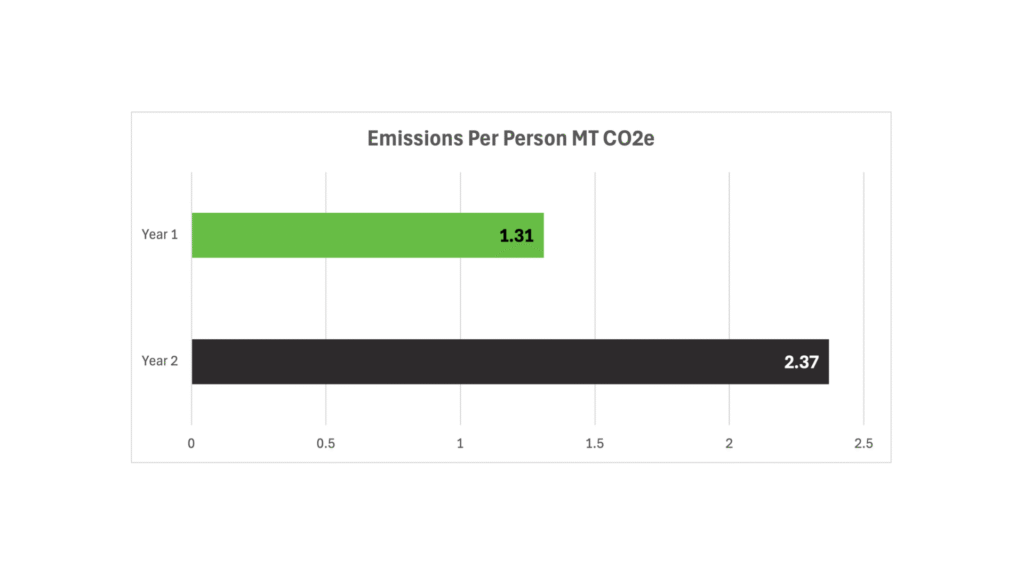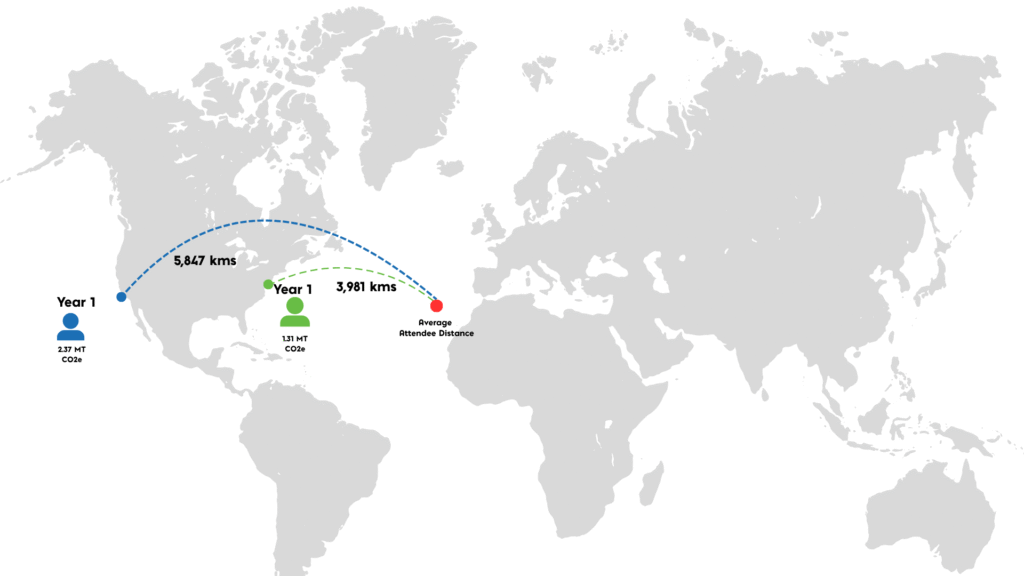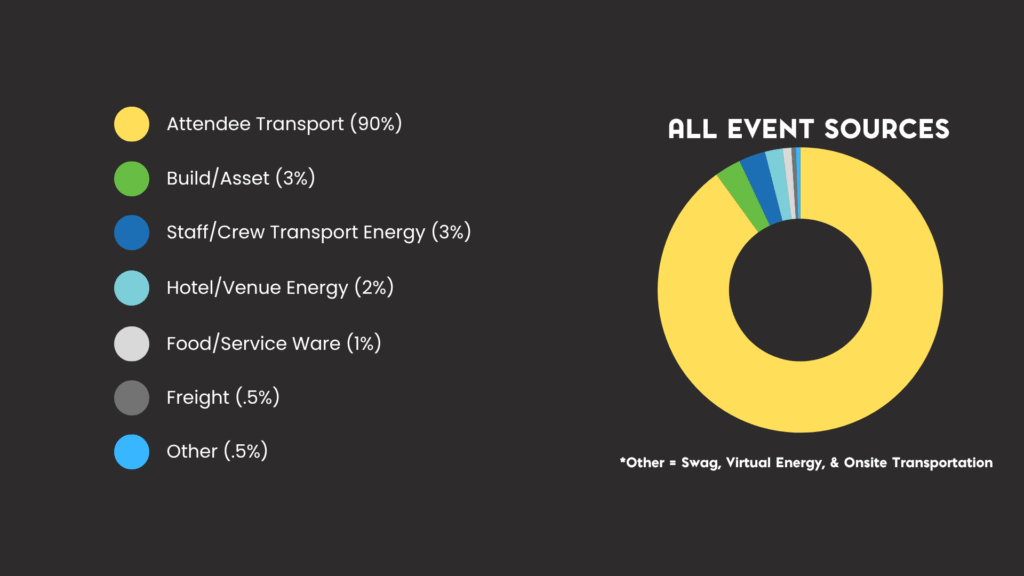When it comes to sustainable event planning, few strategies are as effective and often overlooked as location. In fact, event emissions reduction begins long before the first attendee registers or the venue is booked. One of the most impactful decisions planners can make is selecting a destination that minimizes travel distances for attendees. Why? Because air travel remains the single largest contributor to most event’s carbon footprints, accounting for an average of 90–95% of total emissions.
If you’re aiming for meaningful progress toward Net Zero goals, it’s time to take a closer look at proximity. Let’s explore how thoughtful destination selection can drive dramatic emissions reductions without increasing costs or requiring new technologies. In some cases, just changing where you hold your event can have the same climate impact as cutting every other emissions category in half, multiple times over.
Did You Know?
Holding your event closer to your attendees has a bigger emissions impact than any other changes you can make.
Event Emissions Reduction Is a Delicate Balance
It is no secret that decarbonizing events is a tricky needle to thread. How can we balance an event’s growth while reducing the event emissions?
Event Emissions Are Up In The Air
The challenge is real, and perhaps most vexing of all is the realm of air travel, on which many events are heavily reliant.
Did you know? Across MeetGreen’s 31 years of assessing and interpreting sustainable event metrics, on average, air travel comprises 90-95% of an event’s emissions footprint.
Feet On the Ground
When considering industry Net Zero aspirations:
- What exactly is going to happen to those 90-95% flight-related emissions?
- Is there an emerging technology waiting in the wings? If so, how soon can we leverage it?
In the near and intermediate terms, how can we “reduce” these air travel emissions while still holding and even potentially growing an in-person event? One potential pathway forward is already in our hands: considering our event destination selections through the lens of decarbonization.
Event Emissions In the Real World
Let’s examine real-world emissions data from the same event held in different destinations for two consecutive years. This Sample Client Event occurred with an East Coast location in Year 1 and a West Coast location in Year 2.
When compared at the per person level, emissions appeared substantially higher for the West Coast production in Year 2.

Destinations & Distances
Why is this the case? Despite lower emissions factors for venue and hotels in Year 2, per attendee, km traveled was 3,734 km per person higher with a West Coast location compared to the East, with a total of 8.9 million more km air traveled in Year 2.

Your Mileage May Vary (YMMV)
When these distances are converted to emissions, Year 1 air travel, at the per-person level, was 44% less emissions-intensive than Year 2 and registered a total air travel savings of more than 2.9 million kg CO2e.
The key takeaway here is not that every event should begin booking their events on the East Coast- but rather that decisions regarding destination selection can play a substantial role in shaping carbon footprints & decarbonization strategies.
In our particular event example, a fairly robust EMEA (Europe, Middle East, and Africa) attendee base was represented. It was a much shorter flight to the United States East Coast rather than five additional hours of fuel burn per person to reach the West. While it may seem common sense, the associated emissions savings resulting from these strategies are nearly unparalleled.
In fact, Year 2 would have to reduce all other event emissions by 50% 8 times to equal the savings shown just by changing the Year 1 location.

Other Benefits
Reducing event emissions by 44% is no small achievement, particularly considering that no external intervention has been required and that it is essentially cost-neutral from a planner’s perspective. In addition to the event emissions saved via air travel, there are numerous other benefits from vetting destination selection through sustainability criteria that will move the needle, such as:
- Venue infrastructure
- Public transportation options
- Access to renewable energy
Along with the many exciting developments across the sustainability spectrum in recent years, it is important to remember that some of the most impactful and consequential choices of all are the ones made earliest in the planning process, during destination selection itself.






Leave A Comment